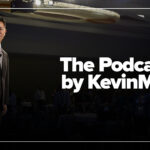I would never have thought I would be the one writing this piece.
I am a board-certified pediatrician and internist with a background in nutrition, well-versed in integrative medicine. Our family eats its fair share of kale, blueberries, and salmon. We hardly ever have a significant supply of junk food in the house. Fast food is a rarity, and she never even tasted juice in toddlerhood. And still, my child’s BMI has been in the obesity range for years.
She was not especially distressed by her size until fourth and fifth grade when a few particularly unhelpful classmates began to point out her size in unkind ways familiar to any who have been fat shamed at some point in their lives. Over these two years, I have watched as her self-esteem suffered blow after blow. She was increasingly identifying as less-than and socially undesirable, retreating further into herself and finding less joy and connection in the outer world.
Annual visits have not been adequate to counter the momentum of weight gain or its internal effects. I have watched as compassionate physicians and dietitians recommended the obvious, and I have watched as those recommendations fell short. I have observed and worked through my own dysregulation when my child’s drive for food combined with an intense internal food reward system led to excessive intake. I have grappled with my own internalized food and body thoughts, beliefs, and preferences along the way, tried to return the unhelpful messages delivered by diet culture and a gaze-obsessed society.
I believe in health at many sizes. I believe fat and fit can coexist. But I also believe the data and am deeply familiar with the health risks associated with obesity: hypertension, hyperlipidemia, metabolic-associated liver disease, orthopedic issues, diabetes, cardiovascular risk, and mental health disorders. I want none of these for my precious child, nor do I want her to feel her body is “wrong.” When the FDA approved GLP-1s for kids down to age 12, I actually uttered my disgust out loud at the time, sure that Big Pharma was up to no good. This is why it is so ironic that I felt compelled to publish this piece about our experience now.
There I was, with the tension of holding medical facts in one hand and my child’s dignity, autonomy, and emotional well-being in the other. If she is destined to live in a bigger body, I want her to be proud of it, comfortable in it, and healthy. But it has never been that simple.
As a parent, these seemingly opposing forces had us stuck in inaction. We felt helpless, confused, and conflicted, especially since it seemed of all people I, as a pediatrician with a background in nutrition and coaching, should know what to do. We were placed on endless wait lists to see healthy lifestyle clinics without success. Restricting access to food felt off. Nagging her to exercise was not helpful for our relationship or the messages she was getting about movement and bodies. So, for the longest time we just watched, worried and stuck.
One day, seemingly out of the blue, it dawned on me that my child has a medical diagnosis: a metabolic condition that happens to have a behavioral component. When my brain heard those words in that order, I felt a profound sense of relief and clarity. It was not a failure on anyone’s part. I have not failed as a parent. She has not failed either. It is not just about self-control or a more correct way of eating. The child needs a medical intervention. I once heard Dr. Fatima Cody-Stanford describe obesity as a relapsing, remitting, neurobehavioral metabolic disease, and I think that hit the nail on the head.
This realization came just in time. At nearly twelve, we were able to see a board-certified obesity specialist, get evaluated, and eventually start on a GLP-1. She is no fan of shots, but she was also truly ready (desperate, even) to get effective help for her metabolic condition. She felt increasingly out of control of her own body and her eating behaviors, and we know now that obesity is a multifactorial, multisystem chronic condition that improves with treatment. We know that the numerous comorbidities improve with effective treatment, and we now have some effective tools to utilize in addition to the sound advice of lifestyle medicine experts and dietitians.
Our experience is still unfolding. She is losing weight, and her drive for food has decreased to a range more readily recognizable as typical. She feels proud of her progress and is interested in healthy choices from a place more aligned with curiosity and dignity, as opposed to compliance and restriction. She is engaged in a structured exercise program that she enjoys and is proud of the muscles she is building. I can see her self-concept recovering with each passing week. She even gave me permission to share her story in the hope that it might help another child get closer to treatment.
None of my personal experience or expertise prepared me for this, so I have decided to become board-certified in obesity medicine to be a part of the solution. In that training, I have learned that treating obesity early in life, especially before puberty, has massive implications for avoiding the lifelong struggle with this diagnosis. I hope this unflinching share of our family’s experience might serve as a road map for others in similar circumstances. We feel like we are working with her physiology now rather than against it, and it has been healing for all of us on multiple levels.
May we all find loving, affirming ways to support our kids in larger bodies in the ways that work best for their emotional and physical well-being.
Chrissie Ott is a multi-passionate, multi-board-certified physician, professional certified coach, and well-being leader with broad experience across life stages and care contexts. She has spoken to national and international audiences about burnout and the healing power of coaching, and has personally coached dozens of health care professionals back to a sense of wholeness. With a background in human nutrition and food science, Dr. Ott integrates clinical knowledge with holistic approaches, including nutrition and purposeful supplementation. She is also a skilled communicator, dedicated to bridging the information and bias gap between health care providers and recipients for improved outcomes. Her work is featured on chrissieottmd.com, her writing and reflections are shared at solvingforjoy.com and on Substack, and she connects regularly with her community through LinkedIn, Facebook, and Instagram.


















![Preventing physician burnout before it begins in med school [PODCAST]](https://kevinmd.com/wp-content/uploads/The-Podcast-by-KevinMD-WideScreen-3000-px-4-190x100.jpg)




